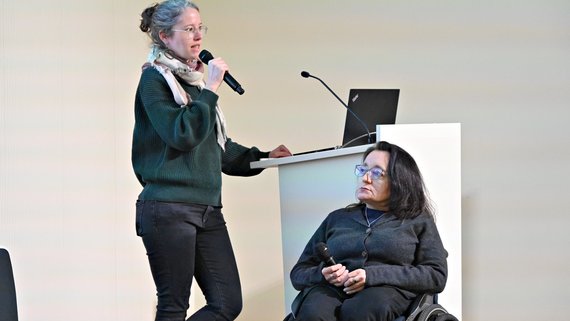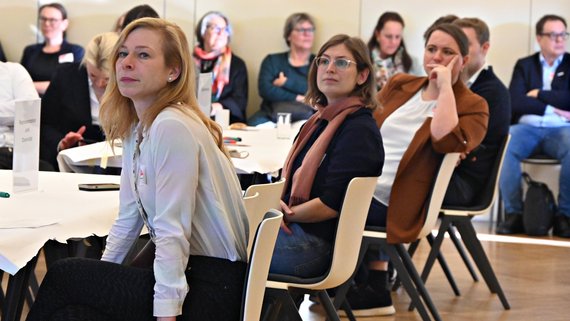How can research projects be implemented in such a way that they create real added value for those affected? What conditions are needed for participation to succeed - and what hurdles need to be overcome? Which projects from the field of rare diseases provide good pointers for this and what can the NUM community contribute?
These and other questions were the focus of the "Patient participation in research" session at the NUM Convention 2025, where representatives from science, research, healthcare, IT, medical informatics, data science, the research-based pharmaceutical industry, patients and their representatives exchanged ideas and jointly developed initial ideas for successful patient participation.
It became clear: Patient participation in research does not mean recruiting them to conduct studies or as "data donors" or only using them as multipliers for the dissemination of results, but starts with the questions of a project and actively involves those affected in the research process. Nevertheless, there are numerous hurdles that need to be overcome and over which researchers have only limited influence. One major change that all researchers and funding organisations can implement is a change in mindset, namely that patient participation is not only desirable, but essential for research that really makes a difference. This can have an impact in terms of better framework conditions and more targeted communication in projects with patient participation.
The impulses from the session should be incorporated into further NUM projects if possible - this was the common goal of the participants. This concern is particularly tangible in the new research project NUM4Rare, which will start in spring 2026. Even during the application process, great importance was attached to the participatory design of the project - an aspect that also impressed the reviewers. The aim of NUM4Rare is to establish a comprehensive, national registry infrastructure for patients with rare diseases. The focus is on the active participation of patients: whether in the governance structure as part of the decision-making process or in the joint development of Patient Reported Outcome Measures (PROMs), which are to be systematically collected in the registry in the future. An approach that systematically integrates the patient-centred perspective into the project process, with the aim of developing transferable approaches for future research projects.




